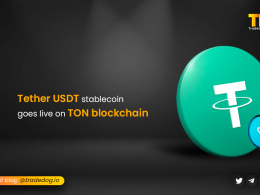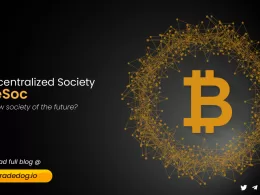Quick Links
In the ever-evolving world of blockchain technology, the term “Layer 3 in Blockchain” has emerged as a buzzword among tech enthusiasts and industry insiders. But what exactly is Layer 3 in Blockchain, and why does it matter? This article dives deep into the concept, unraveling its complexities and implications for the future of decentralized applications.
Understanding the Layers: The Role of Layer 3 in Blockchain
1. The Foundation: What is Layer 1 in Blockchain?
To grasp the essence of Layer 3 in Blockchain, it’s essential to start at the beginning: Layer 1. This foundational layer represents the core blockchain technology – networks like Bitcoin and Ethereum. Layer 1 is where the primary architecture lives, including consensus mechanisms and native cryptocurrencies.
2. Building Upon the Base: The Significance of Layer 2 in Blockchain
Layer 2 in Blockchain refers to solutions built atop Layer 1 to enhance scalability and efficiency. Examples include Lightning Network for Bitcoin and Plasma for Ethereum. Layer 2 solutions address limitations in transaction speed and cost, crucial for mainstream adoption.
3. The Emergence of Layer 3 in Blockchain: A New Frontier
Layer 3 in Blockchain is where things get intriguing. It represents the application layer – a realm of advanced, decentralized applications (dApps) and protocols that leverage the security and decentralization of Layers 1 and 2. Layer 3 in Blockchain is about user experience, interface, and specialized services.
Delving Deeper: The Intricacies of Layer 3 in Blockchain
1. The User Experience Focus: How Layer 3 Enhances Blockchain Usability
At its core, Layer 3 in Blockchain is designed to improve the end-user experience. It’s where developers create user-friendly interfaces and applications that interact seamlessly with the underlying blockchain layers. This layer is crucial for bringing blockchain technology to a broader audience.
2. Specialized Services and Protocols: The Breadth of Layer 3 in Blockchain
Layer 3 in Blockchain encompasses a wide range of services and protocols. From decentralized finance (DeFi) platforms to non-fungible tokens (NFTs), Layer 3 is the playground for innovation. It’s where complex functionalities like smart contract orchestration and cross-chain interoperability come to life.
The Real-World Impact: Layer 3 in Blockchain Applications
1. Decentralized Finance (DeFi): A Layer 3 Revolution
One of the most prominent examples of Layer 3 in Blockchain in action is in the DeFi sector. DeFi applications on Layer 3 offer financial services – lending, borrowing, and trading – without the need for traditional financial intermediaries. This sector showcases the potential of Layer 3 in transforming finance.
2. Non-Fungible Tokens (NFTs): Layer 3’s Cultural Phenomenon
NFTs have taken the world by storm, and they’re a prime example of Layer 3 in Blockchain applications. These unique digital assets represent ownership of art, music, and more, leveraging the blockchain’s immutability and transparency.
The Future Powered by Layer 3 in Blockchain
1. The Potential for Mainstream Adoption
The advancement of Layer 3 in Blockchain is pivotal for blockchain’s mainstream adoption. By providing user-friendly applications and interfaces, Layer 3 makes blockchain accessible to the average person, not just tech-savvy individuals.
2. Challenges and Opportunities Ahead
While Layer 3 in Blockchain holds immense promise, challenges remain. Issues like ensuring security, scalability, and regulatory compliance are critical for Layer 3’s success. However, these challenges also present opportunities for innovation and growth.
Conclusion: Embracing the Layer 3 Era in Blockchain
In conclusion, Layer 3 in Blockchain is more than just a technical term; it’s the bridge that connects complex blockchain infrastructure to practical, everyday applications. As we continue to explore and expand this layer, we unlock the full potential of blockchain technology, paving the way for a decentralized, efficient, and inclusive digital future.









